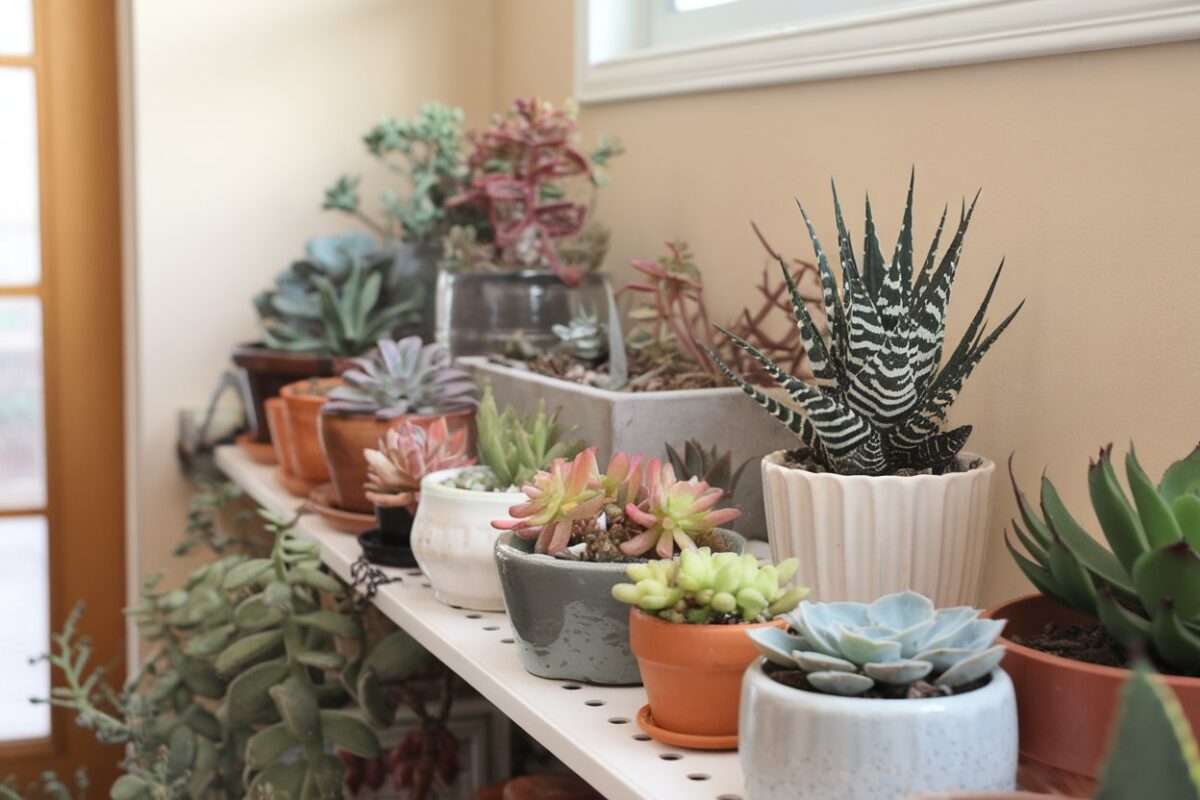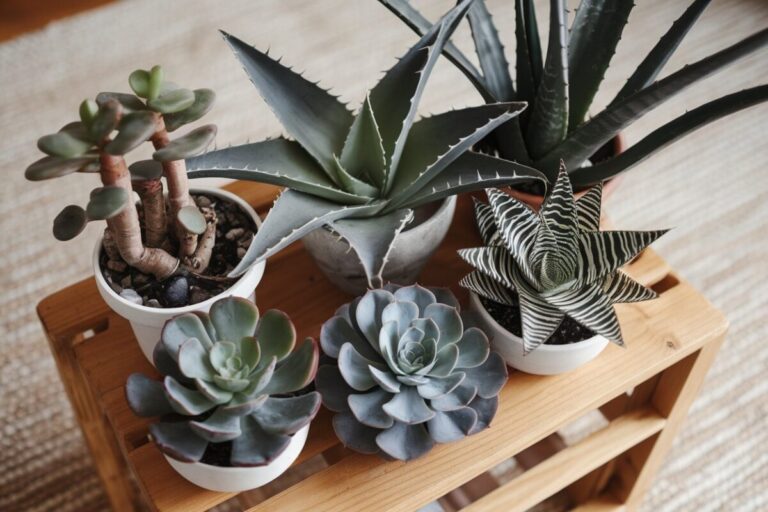Create Your Own Indoor Succulent Garden: 5 Easy Steps
Creating an indoor succulent garden is a great way to bring some nature into your home. Succulents are easy to care for, need little water, and come in lots of shapes, colors, and textures, making them perfect for adding a cool look to any room. Succulents also help clean the air and create a calming atmosphere, which can reduce stress and boost your mood. Whether you’re experienced with plants or just starting out, creating an indoor succulent garden is a fun and rewarding project that will brighten up your living space.
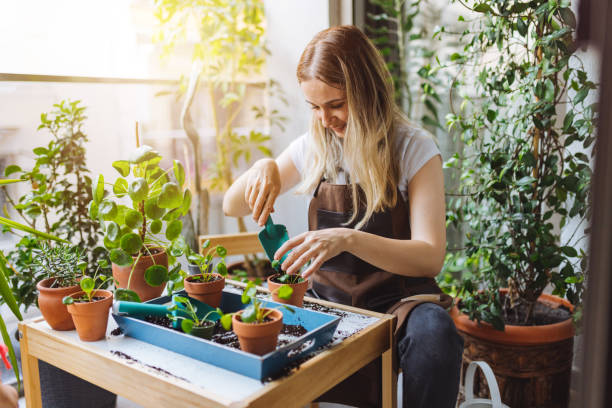
Step 1: Choose the Right Succulents for Your Space
When picking succulents for your indoor garden, it’s important to think about where they will be placed. Different succulents need different amounts of light, temperature, and humidity. Here are some things to consider:
- Lighting Conditions:
- Bright, Direct Light: If you have a sunny spot near a window, choose succulents like Aloe Vera or Echeveria.
- Low Light: If your space doesn’t get much sunlight, pick succulents like Snake Plant (Sansevieria) or Haworthia.
- Size of the Space:
- Small Spaces: Choose small succulents like Zebra Haworthia or Jade Plant that fit well on shelves or small tables.
- Larger Areas: Pick bigger succulents like Jade Plant or Burro’s Tail that can make a statement.
- Temperature and Humidity:
- Most succulents like moderate indoor temperatures (60-80°F) and low humidity. Make sure your space matches these conditions to help your succulents grow well.
Recommended Succulents
| Succulent Type | Light Requirement | Ideal Space | Special Features |
|---|---|---|---|
| Aloe Vera | Bright, direct | Window sill or sunny spot | Healing gel for burns and cuts |
| Snake Plant | Low to bright, indirect | Low-light corners | Air-purifying, very hardy |
| Burro’s Tail | Bright, indirect | Hanging planters | Cascading, trailing stems |
| Jade Plant | Bright, indirect | Tabletop or floor pots | Brings good luck, easy to care |
| Zebra Haworthia | Bright, indirect | Small planters or shelves | Unique striped leaves |
Choosing the right succulents will help your garden thrive and look amazing. Take your time to think about the light and space you have, and pick the succulents that best fit those conditions.
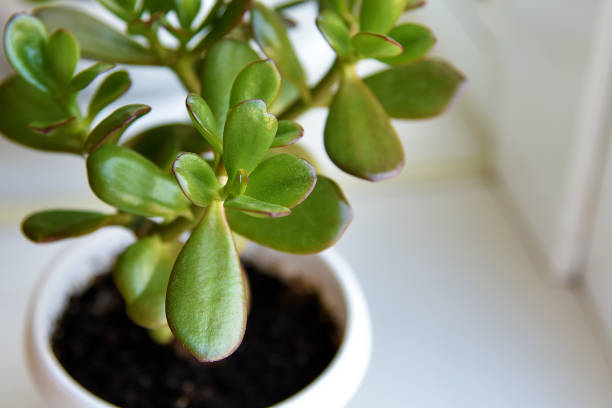
Step 2: Select the Perfect Containers for Your Succulents
Picking the right containers for your succulents is just as important as choosing the plants. The right container will make your garden look nice and help your succulents stay healthy. Here are some things to consider:
- Drainage:
- Essential for Succulents: Make sure your container has drainage holes. Succulents don’t like sitting in water, and good drainage helps prevent root rot.
- Using Containers Without Drainage: If you love a pot without drainage, add a layer of pebbles at the bottom to keep extra water away from the roots.
- Size of the Container:
- Right Fit: Pick a container that isn’t too big. Succulents like snug pots because too much space can lead to overwatering and root problems.
- Growth Room: The container should give the plant some room to grow, but not so much that it gets overwhelmed by extra soil.
- Material:
- Terracotta: Terracotta pots are great because they let air and moisture move through, which keeps the soil from getting too wet.
- Ceramic or Plastic: Ceramic pots are stylish and come in many designs, while plastic pots are lightweight and affordable. Just make sure they have drainage holes.
- Style and Aesthetic:
- Match Your Space: Pick containers that match your home’s style. You can mix and match different colors, shapes, and sizes to create a unique and beautiful display.
Container Options
| Container Type | Pros | Cons | Best Use |
|---|---|---|---|
| Terracotta | Porous, helps prevent rot | Can dry out quickly | Bright, warm areas |
| Ceramic | Stylish, many designs | Heavier, may lack drainage | Decorative indoor settings |
| Plastic | Lightweight, affordable | May hold too much moisture | Hanging or shelf planters |
| Glass | Unique look, clear view | No drainage, water buildup | Terrariums, decorative displays |
Choosing the right container will help your succulents stay healthy and make your indoor garden look great. Keep these tips in mind, and you’ll create a beautiful setup for your succulents.
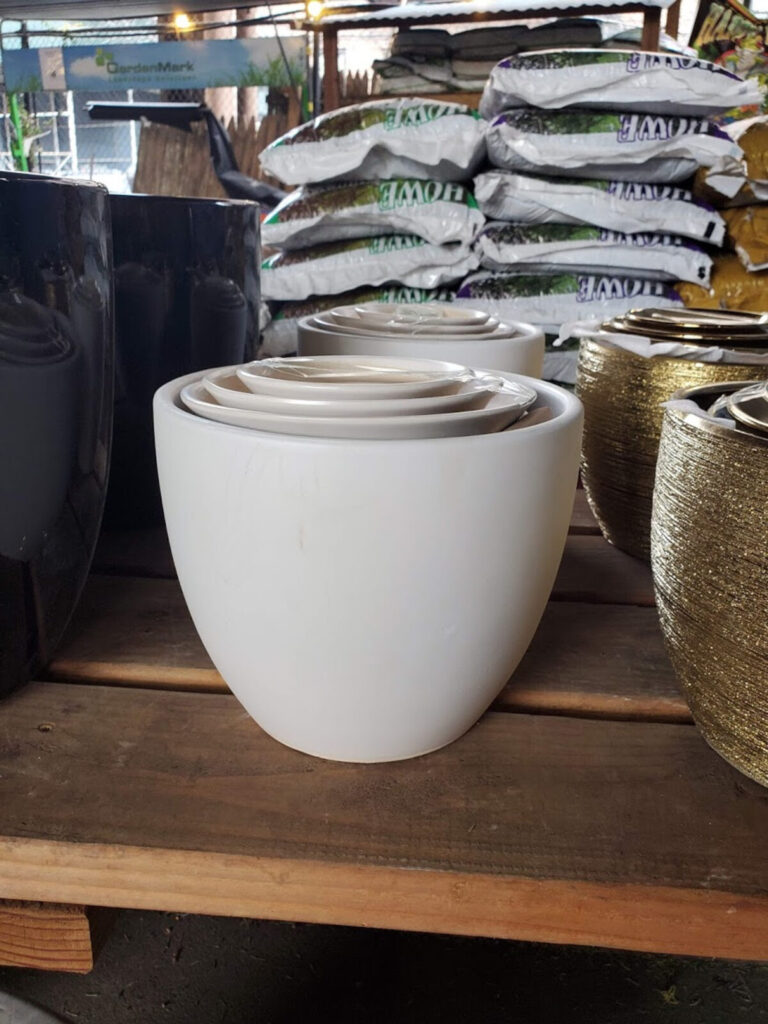
Step 3: Prepare the Soil for Optimal Growth
Getting the soil right is key to helping your succulents grow well. Succulents need well-draining soil to prevent water from sitting around their roots, which can cause root rot. Here are some tips for preparing the perfect soil for your indoor succulent garden:
- Use the Right Type of Soil: Regular potting soil is too dense for succulents because it holds too much moisture. Instead, use a cactus or succulent potting mix that’s made for good drainage.
- Add Perlite or Sand: To improve drainage even more, mix in perlite or coarse sand with your succulent soil. A good mix is about 2 parts succulent soil to 1 part perlite or sand.
- Avoid Moisture-Retaining Additives: Stay away from potting soil with moisture-retaining additives like peat moss. Succulents don’t need soil that stays damp, as this can cause root rot.
Soil Preparation Tips
| Soil Component | Purpose | Notes |
|---|---|---|
| Succulent Potting Mix | Good drainage | Designed to dry quickly and prevent rot |
| Perlite or Coarse Sand | Improves drainage | Helps prevent water from pooling |
| Peat Moss | Avoid using | Retains too much moisture, not suitable |
Step-by-Step Soil Preparation
- Mix the Soil: Combine 2 parts succulent potting mix with 1 part perlite or coarse sand to create a well-draining mix.
- Test the Drainage: Take a handful of the soil mix and wet it slightly. It should crumble easily and not clump together. If it clumps, add more perlite or sand.
- Fill the Container: Put the soil mix into your container, making sure there’s enough room for the succulent’s roots to spread comfortably.
Preparing the soil the right way will give your succulents a good foundation to grow. Proper drainage and the right soil mix will help keep your plants healthy for years to come.
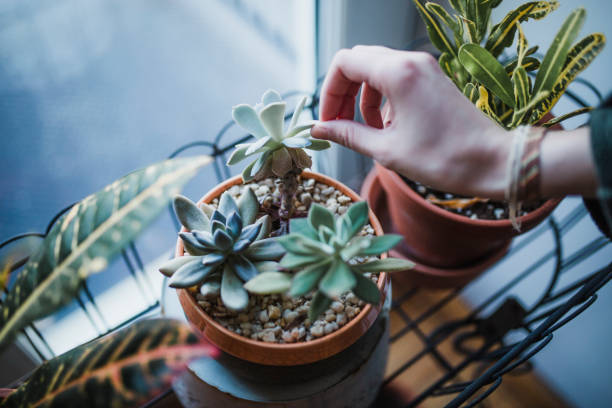
Step 4: Plant Your Succulents with Care and Style
Now that you have your succulents, containers, and soil ready, it’s time to plant! Here are some tips to make sure you plant your succulents with care and style:
- Handle Succulents Gently: Succulent leaves can be fragile, so handle them carefully. If any leaves fall off while planting, don’t worry—you might be able to grow new plants from them.
- Prepare the Container: Fill your container about two-thirds full with your well-draining soil mix. Make a small hole in the center where your succulent will go.
- Place the Succulent: Gently take the succulent out of its pot. Loosen the roots if they’re compacted. Put the succulent into the hole you made in the soil and press the soil gently around the base to secure it.
- Add Decorative Elements: For extra style, add a top layer of small decorative stones or pebbles. This helps keep the soil in place and gives your arrangement a polished look.
- Water Sparingly: After planting, wait a few days before watering your succulents. This gives any damaged roots time to heal and helps prevent rot. When you do water, soak the soil well but let it dry out completely before watering again.
Planting Tips Summary
- Handle gently to avoid damaging the leaves and roots.
- Create a stable base by pressing the soil gently around the roots.
- Add pebbles for a polished look.
- Wait a few days before watering, and always let the soil dry out between waterings.
Planting your succulents carefully will help them settle in and grow well. Adding some decorative touches will also make your indoor garden more beautiful, turning it into a lovely feature in your home.

Step 5: Master the Art of Succulent Care and Maintenance
Once your succulents are planted, taking care of them is key to keeping them healthy and looking great. Here are some important care tips to help your succulents thrive:
Watering
- Water Sparingly: Succulents store water in their leaves and stems, so they don’t need a lot of water. Only water your succulents when the soil is completely dry.
- Use the Soak and Dry Method: When watering, soak the soil until water drains out of the bottom of the pot. Then let the soil dry out completely before watering again.
- Avoid Overwatering: Overwatering is one of the main reasons succulents die. It’s better to underwater than overwater because succulents can handle drought better than being too wet.
Lighting
- Bright, Indirect Light: Most succulents do well in bright, indirect light. Place them near a window with lots of sunlight, but avoid harsh direct sunlight, which can burn their leaves.
- Rotate Regularly: Succulents tend to grow towards the light, so rotate the pots every few weeks to help them grow evenly.
Temperature and Humidity
- Ideal Temperature: Succulents do best in temperatures between 60-80°F (15-27°C). Keep them away from cold drafts or heat sources like radiators.
- Low Humidity: Succulents prefer low humidity. If your home is very humid, use a dehumidifier or make sure there’s good air circulation.
Fertilizing
- Feed Sparingly: Succulents don’t need much fertilizer. Use a diluted, balanced fertilizer once a month during the growing season (spring and summer). Don’t fertilize during the winter when the plants are dormant.
Pruning and Cleaning
- Remove Dead Leaves: Regularly remove any dead or dying leaves from the base of your succulents to keep them healthy and prevent pests.
- Dust the Leaves: Gently dust off the leaves so they can absorb sunlight properly.
Common Succulent Care Issues
- Stretching (Etiolation): If your succulent is growing tall and thin, it may not be getting enough light. Move it to a brighter spot.
- Wrinkled Leaves: Wrinkled or shriveled leaves mean your succulent needs more water. Give it a good soak but let the soil dry out completely afterward.
- Yellow or Mushy Leaves: This usually means overwatering. Let the soil dry out completely and water less often.
Care and Maintenance Summary
| Care Aspect | Key Tips |
|---|---|
| Watering | Water only when soil is dry, use soak and dry method |
| Lighting | Bright, indirect light, rotate regularly |
| Temperature | Keep between 60-80°F, avoid drafts |
| Fertilizing | Once a month in spring/summer, not in winter |
| Pruning | Remove dead leaves, dust leaves regularly |
Taking good care of your succulents will keep your indoor garden healthy and beautiful for years to come. Enjoy the beauty and calm that these amazing plants bring to your space.
Bonus Tips: Designing a Succulent Garden That Truly Shines
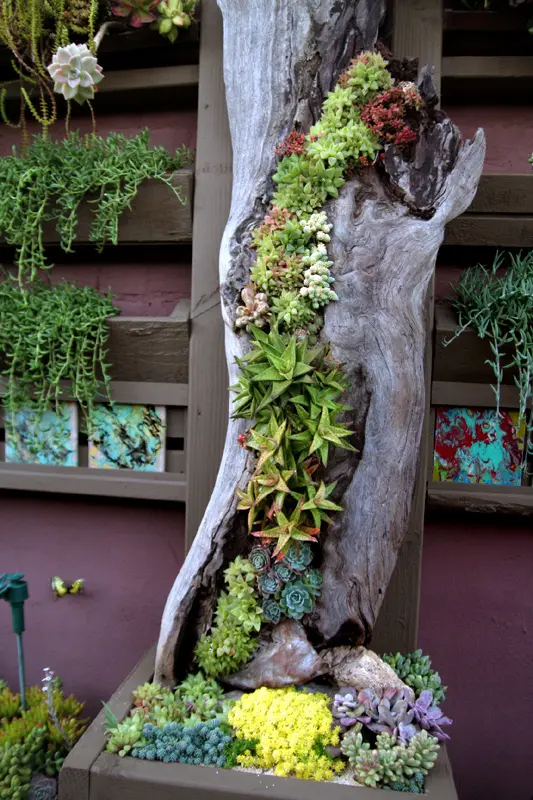
Want to make your succulent garden even better? Here are some bonus tips for designing an indoor succulent garden that really stands out:
- Create a Focal Point: Pick a larger, eye-catching succulent to be the centerpiece of your garden. Surround it with smaller succulents for a balanced and appealing display.
- Use Different Heights and Textures: Combine succulents of different heights and textures to make your garden more interesting. Tall succulents like Snake Plant pair well with rosette-shaped succulents like Echeveria or trailing ones like Burro’s Tail.
- Add Decorative Elements: Add decorative items like small figurines, driftwood, or seashells to give your garden personality. These elements can make your succulent arrangement feel more like a mini landscape.
- Group by Light Requirements: Arrange succulents with similar light needs together. This will make it easier to care for them and ensure each plant gets the right amount of sunlight.
- Color Coordination: Think about the colors of your succulents when designing your garden. Mixing greens with reds, purples, and blues can create a stunning contrast that catches the eye.
- Use Creative Containers: Think beyond regular pots. You can plant succulents in teacups, vintage tins, or even hollowed-out logs. Just make sure there’s good drainage.
- Layer with Pebbles or Moss: Add a layer of pebbles or preserved moss around your succulents to give your garden a polished look. This not only looks great but also helps keep the soil in place.
Adding these creative touches will help you design a succulent garden that not only grows well but also looks amazing in your home.

